Low-Maintenance Garden Plants to Use All Year Round
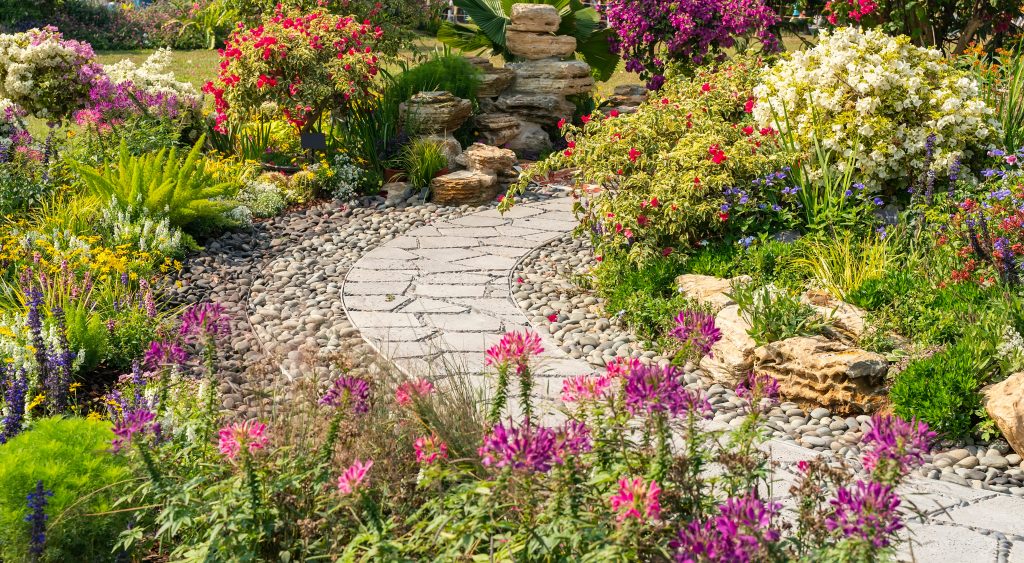
A low-maintenance garden saves time and effort while still offering year-round beauty – and perennials, which return season after season, are perfect for UK gardens where weather can be unpredictable. These hardy plants thrive with minimal care, providing consistent structure, colour, and interest throughout the year.
By choosing the right mix of perennials, you can enjoy a vibrant garden that requires less work, leaving more time to simply enjoy it.
Everything You Need to Know About Perennial Plants
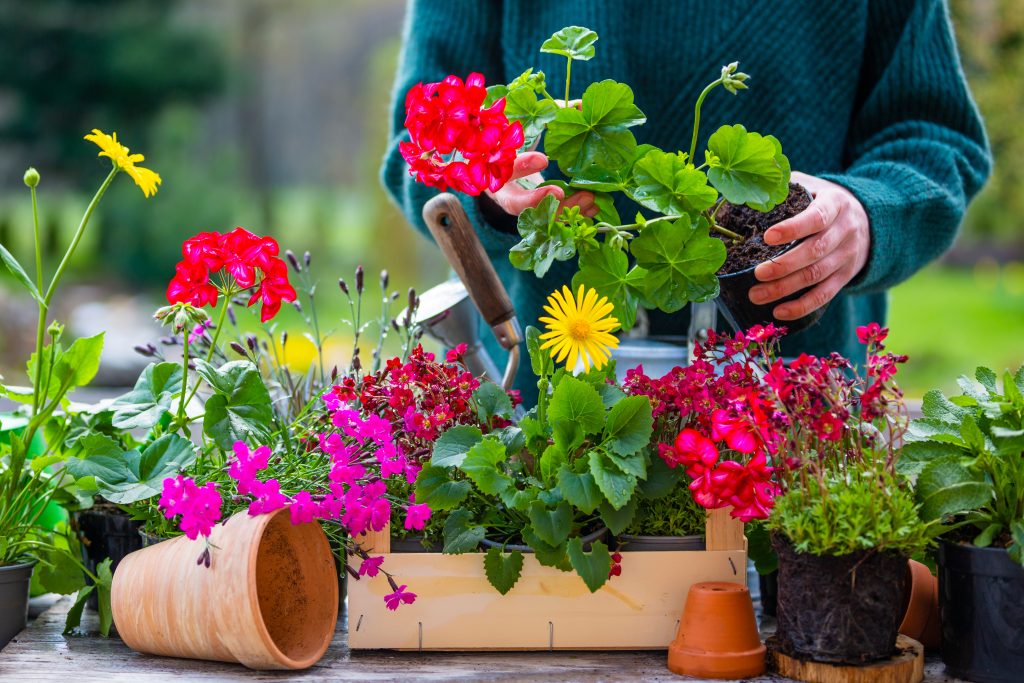
Perennial plants live for more than two years, returning each season with new growth from their existing roots. Unlike annuals, which complete their life cycle in a single year and need replanting, perennials establish themselves over time, becoming more robust with each passing season. This makes them an excellent choice for gardeners seeking long-term, low-maintenance solutions.
What Is the Difference Between Perennials and Annuals?
The key difference between perennials and annuals lies in their life cycles. Annuals are often chosen for their bright, season-long blooms, but they require replanting each year, making them more labour-intensive. Perennials, on the other hand, may have a shorter flowering period, but they return year after year, reducing the need for constant replanting.
With careful selection, you can ensure a staggered blooming period, providing visual interest throughout the year.
What to Remember When Planting a Garden in the UK
Your plants must be hardy enough to withstand cold winters and resilient enough to thrive during wet or dry spells. By selecting perennials that are native or well-adapted to our British soils and environments, you’ll create a garden that looks good and requires less intervention.
Different Types of Low-Maintenance Garden Plants
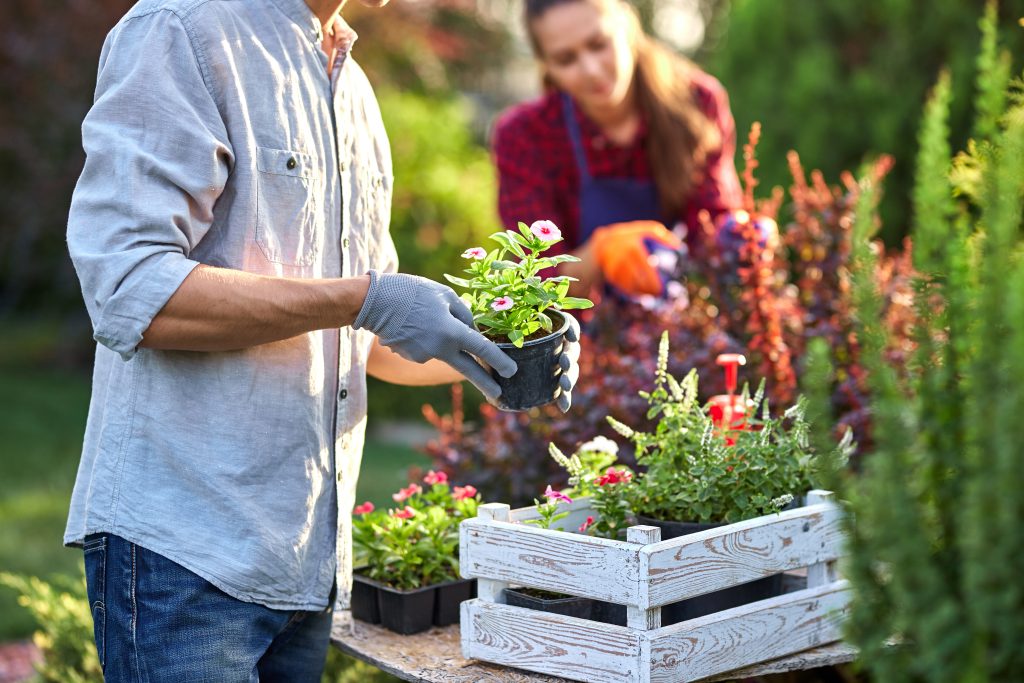
Drought-Tolerance
Drought-tolerant plants are essential in the UK, especially in the summer. Examples include ornamental grasses like Stipa tenuissima, which add texture and movement to the garden while requiring little water.
Pest-Resistance
These growths naturally fend off common garden pests, reducing the need for chemical treatments and ongoing maintenance. Hardy geraniums, for instance, are known for their resilience against pests and diseases, making them a reliable choice for low-maintenance gardens.
Minimal Feeding Requirements
Some plants need regular fertilisation to thrive, but low-maintenance varieties can grow well in less fertile soils. Ground covers like Ajuga reptans and Alchemilla mollis are excellent choices, as they spread to cover bare soil, suppressing weeds and reducing the need for feeding.
3 Tips for Designing Your Own Perennial Garden
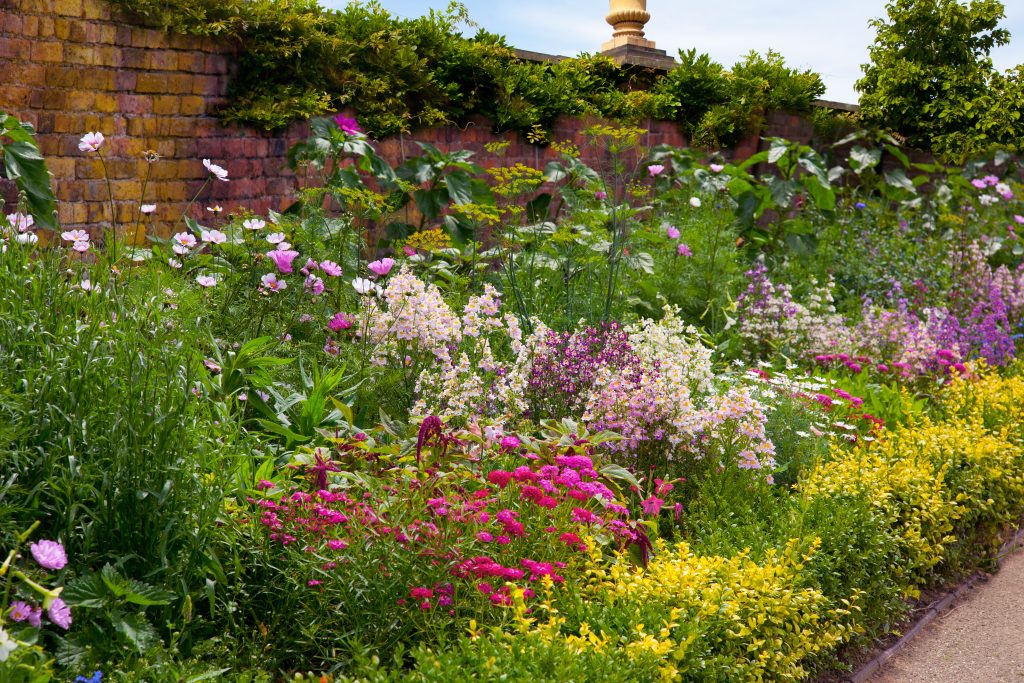
Designing a perennial garden requires thoughtful planning to ensure a low-maintenance space that thrives throughout the year. Here are some key tips to help you create an effective layout and choose the right plants for your garden:
1. Garden Layout and Plant Placement
Start by assessing your garden’s conditions, including sun exposure, soil type, and drainage. Full sun areas, which receive at least six hours of direct sunlight daily, are ideal for sun-loving perennials like Lavandula (lavender) and Echinacea (coneflower). Shadier spots, on the other hand, are perfect for shade-tolerant plants such as Hosta and Brunnera, which thrive with less direct light.
Consider the soil type in each area of your garden too – whether it’s sandy, loamy, or clay-based – and select plants that are well-suited to these conditions. For instance, plants like Sedum and Thymus are excellent for sandy soils, while Astilbe and Ligularia do well in heavier, moisture-retentive soils.
2. Colour Schemes and Seasonal Interest
When selecting perennials, think about how the colours and textures will evolve throughout the seasons. Green foliage provides a consistent backdrop, but adding pops of colour with pink flowers, such as Geranium and Dianthus, or vibrant blooms from Helenium and Rudbeckia can create striking focal points.
Aim for a mix of early, mid, and late-season bloomers to ensure continuous interest.
Ornamental grasses, with their varied heights and textures, can add movement and contrast, especially in the autumn when their seed heads catch the light.
3. Grouping Plants with Similar Care Needs
To simplify maintenance, group plants with similar care requirements together. For example, place drought-tolerant plants like Lavandula and Salvia in one section of the garden, where they can thrive without frequent watering. Shade-loving plants like Ferns and Heuchera can be grouped in another area, ensuring they receive the moisture and protection they need.
Our 10 Low-Maintenance Garden Plant Picks
Below is a list of top perennials that thrive in various conditions and provide seasonal colour and texture:
1. Lavandula angustifolia (English Lavender)
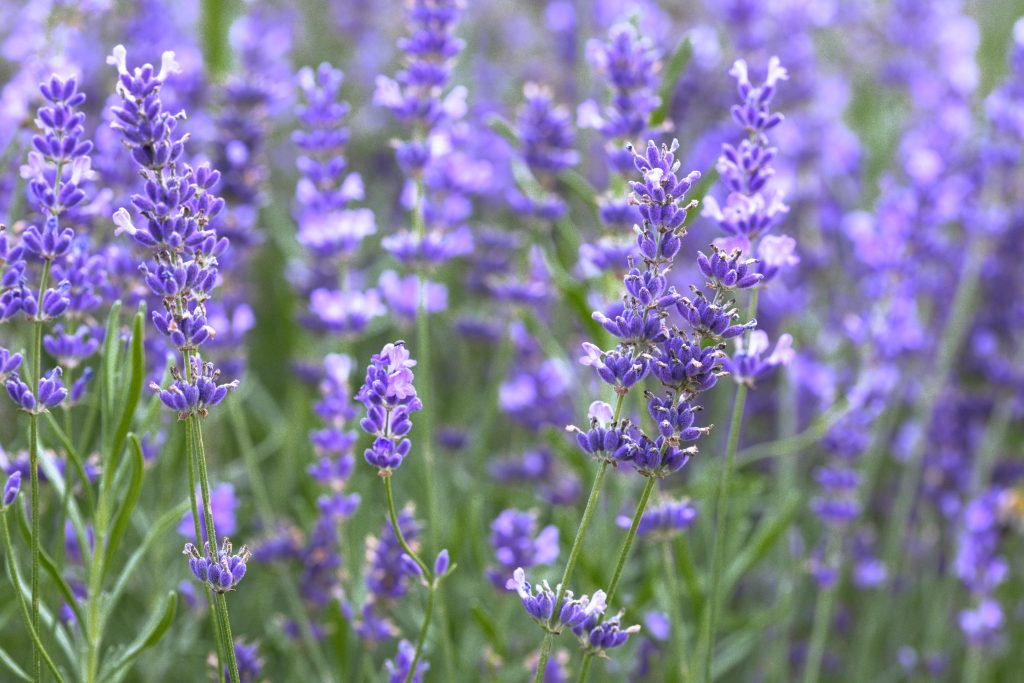
Care Needs: Drought-tolerant and thrives in full sun. Requires well-drained soil.
Flowering Season: Summer.
Lavender’s fragrant purple flowers and silvery foliage add a classic touch to any garden, while its drought resistance makes it ideal for low-maintenance gardens.
2. Geranium ‘Rozanne’ (Cranesbill)
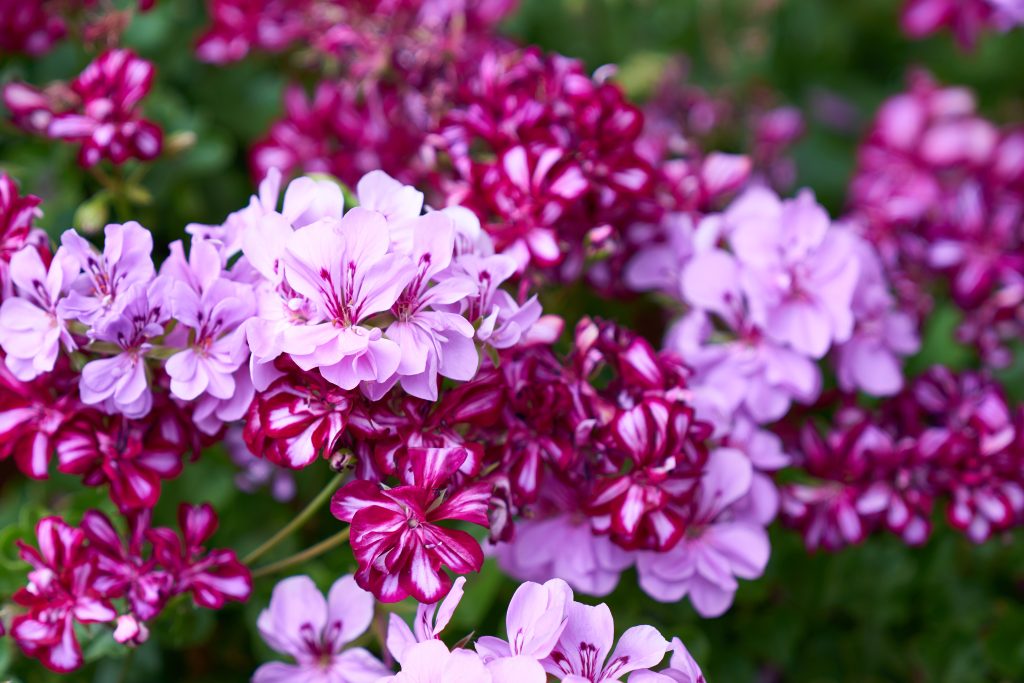
Care Needs: Grows well in sun or partial shade. Prefers moist, well-drained soil.
Flowering Season: Late spring to early autumn.
This hardy geranium offers long-lasting violet-blue flowers and works well as ground cover, providing colour for months with little care.
3. Sedum ‘Autumn Joy’ (Stonecrop)
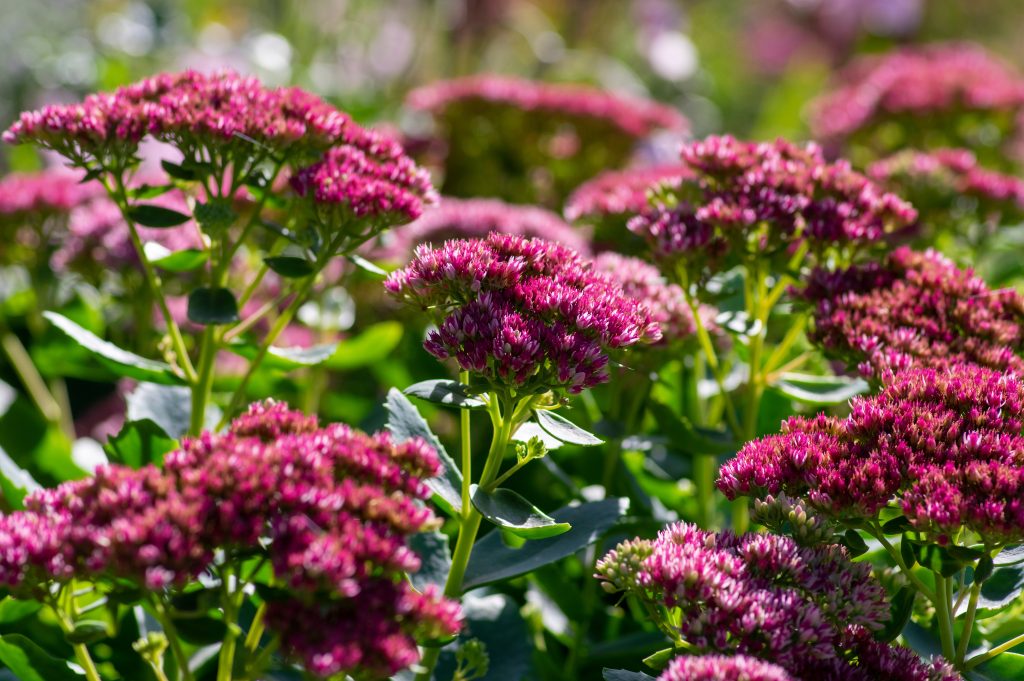
Care Needs: Prefers full sun and well-drained soil. Extremely drought-tolerant.
Flowering Season: Late summer to autumn.
Sedum offers succulent-like foliage and large, rosy-pink flower clusters that deepen to copper tones as the season progresses, adding both texture and colour late in the year.
4. Helleborus orientalis (Lenten Rose)
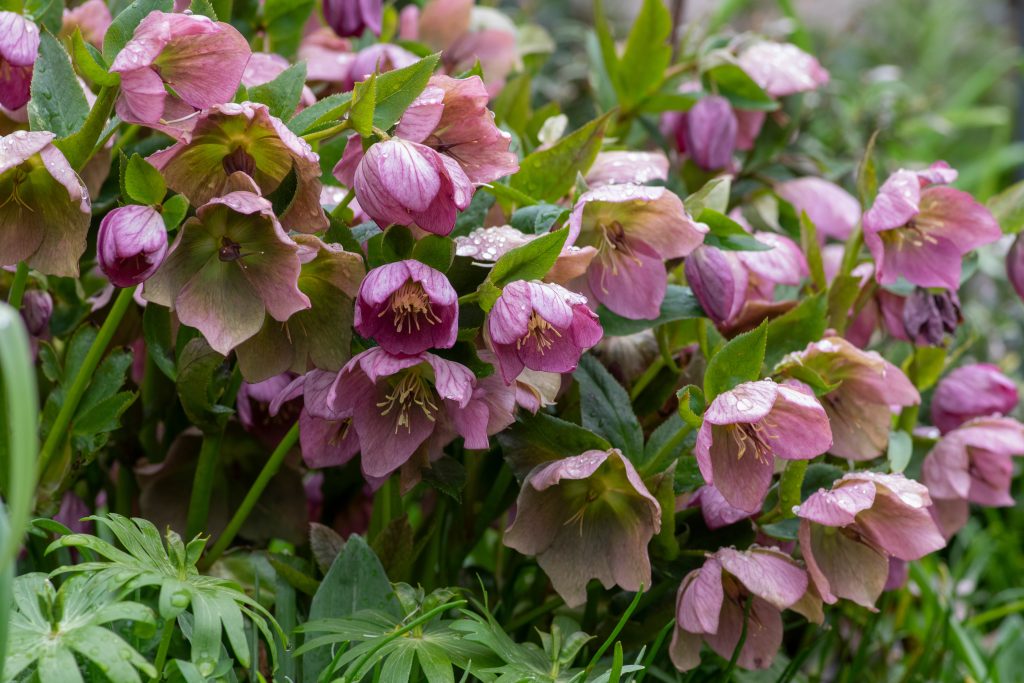
Care Needs: Thrives in partial to full shade with well-drained, fertile soil.
Flowering Season: Late winter to early spring.
Helleborus brings early colour with its nodding, cup-shaped flowers in shades of white, pink, and purple, making it a standout in winter and early spring gardens.
5. Brunnera macrophylla (Siberian Bugloss)
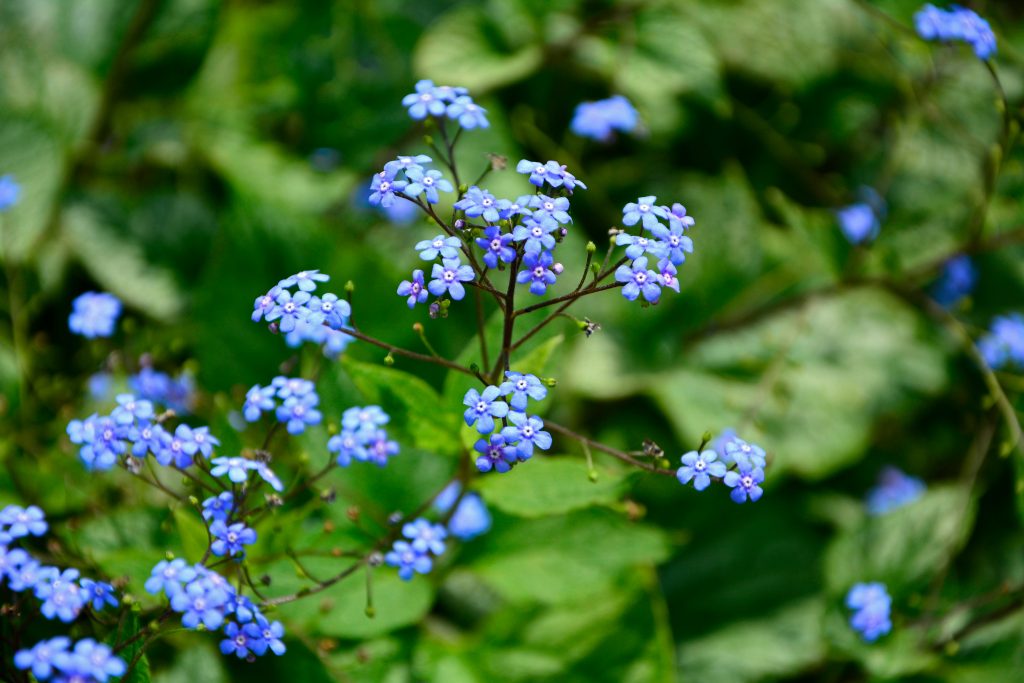
Care Needs: Prefers partial shade and moist, well-drained soil.
Flowering Season: Spring.
With heart-shaped, silvery leaves and delicate blue flowers, Brunnera adds both texture and a soft pop of colour to shady areas.
6. Echinacea purpurea (Coneflower)
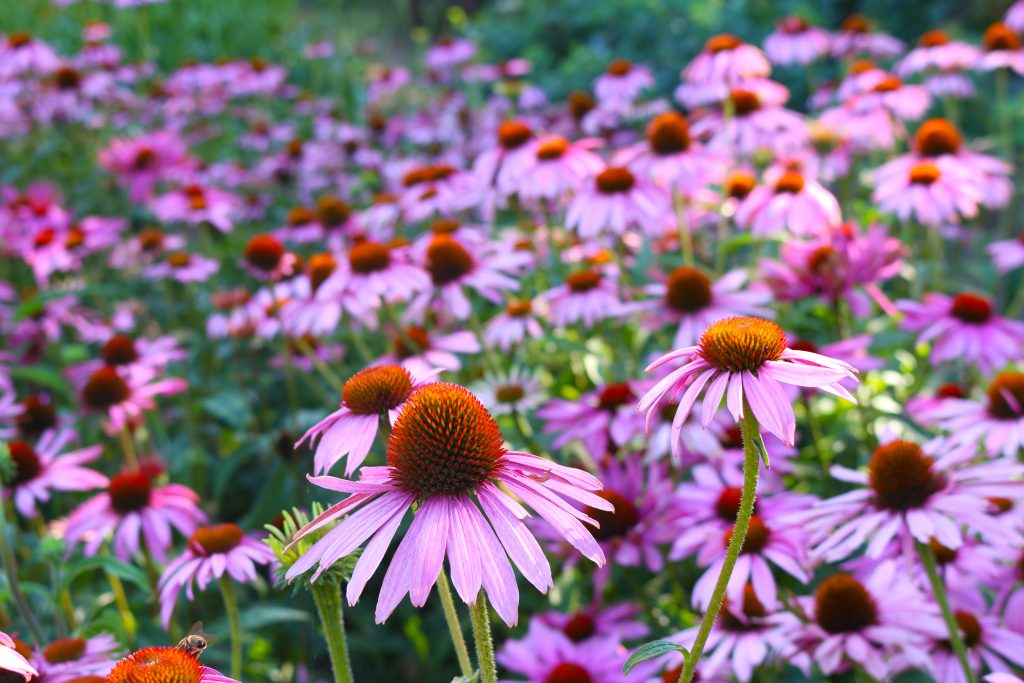
Care Needs: Thrives in full sun and well-drained soil. Tolerant of drought.
Flowering Season: Summer to early autumn.
Echinacea is known for its large, daisy-like flowers in pink, purple, or white, and provides a bold splash of colour during the summer. It’s also a favourite for pollinators.
7. Bergenia cordifolia (Elephant’s Ears)
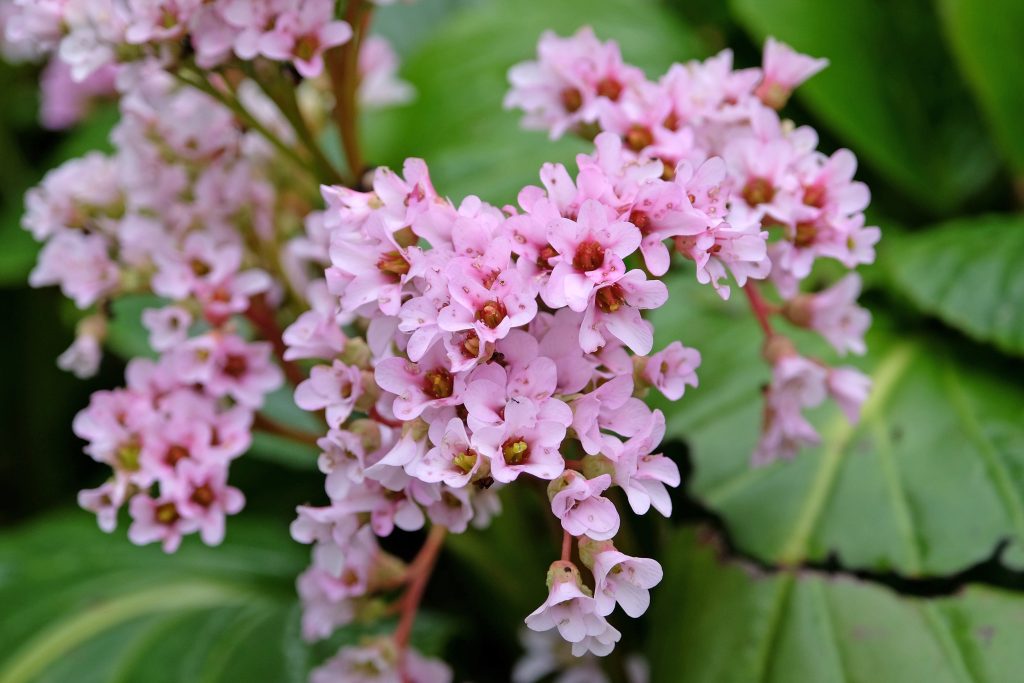
Care Needs: Tolerates a range of soils, including poor and rocky soil. Prefers full sun.
Flowering Season: Spring.
Bergenia offers thick, glossy leaves that turn bronze in winter, along with clusters of pink flowers in spring. It’s excellent for ground cover and winter interest.
8. Miscanthus sinensis (Maiden Grass)
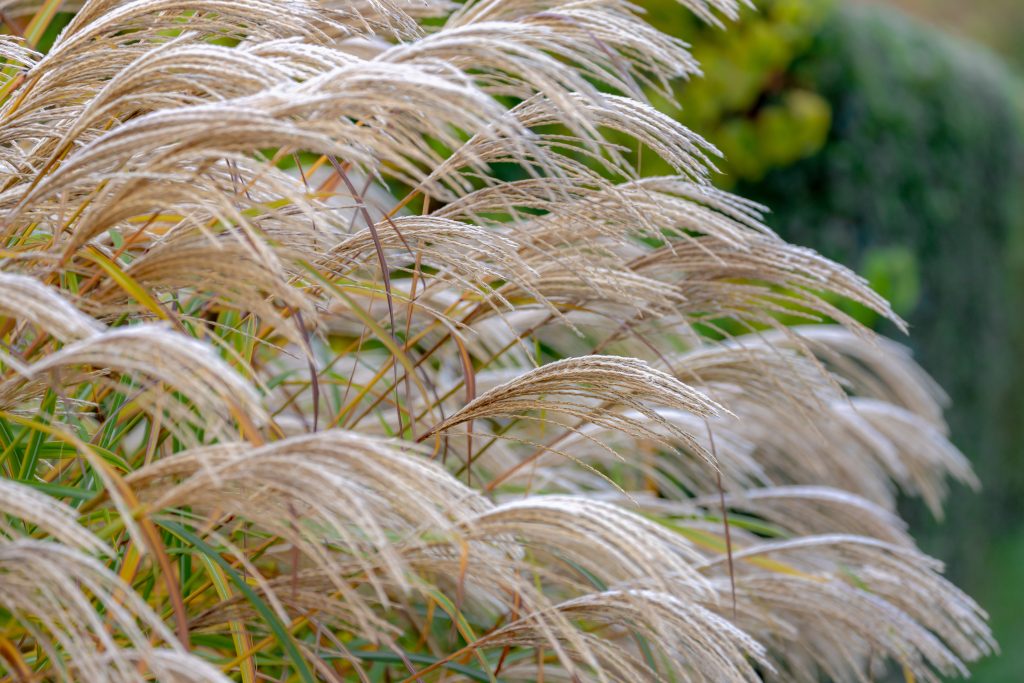
Care Needs: Full sun and well-drained soil. Drought-tolerant and requires little care.
Flowering Season: Late summer to autumn.
This ornamental grass adds height and texture, with its feathery plumes creating movement in the garden and adding visual interest through autumn and winter.
9. Heuchera ‘Palace Purple’ (Coral Bells)
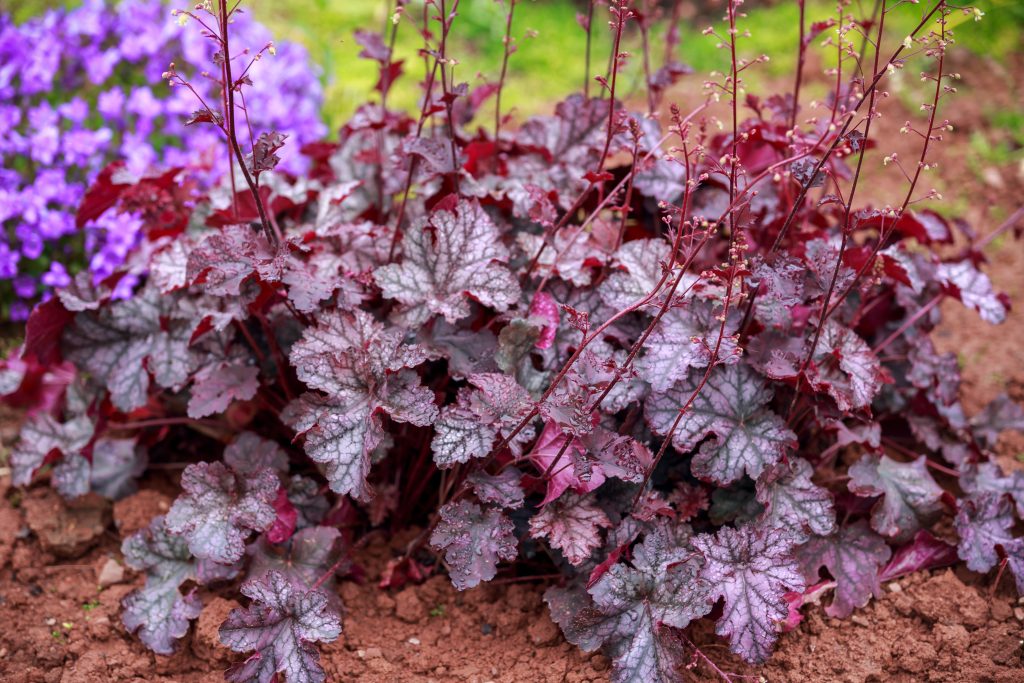
Care Needs: Prefers partial shade and well-drained soil. Drought-tolerant.
Flowering Season: Late spring to early summer.
Heuchera offers striking burgundy foliage and delicate white or pink flowers. Its vibrant leaves provide colour all year, making it a versatile choice for borders and containers.
10. Nepeta ‘Walker’s Low’ (Catmint)
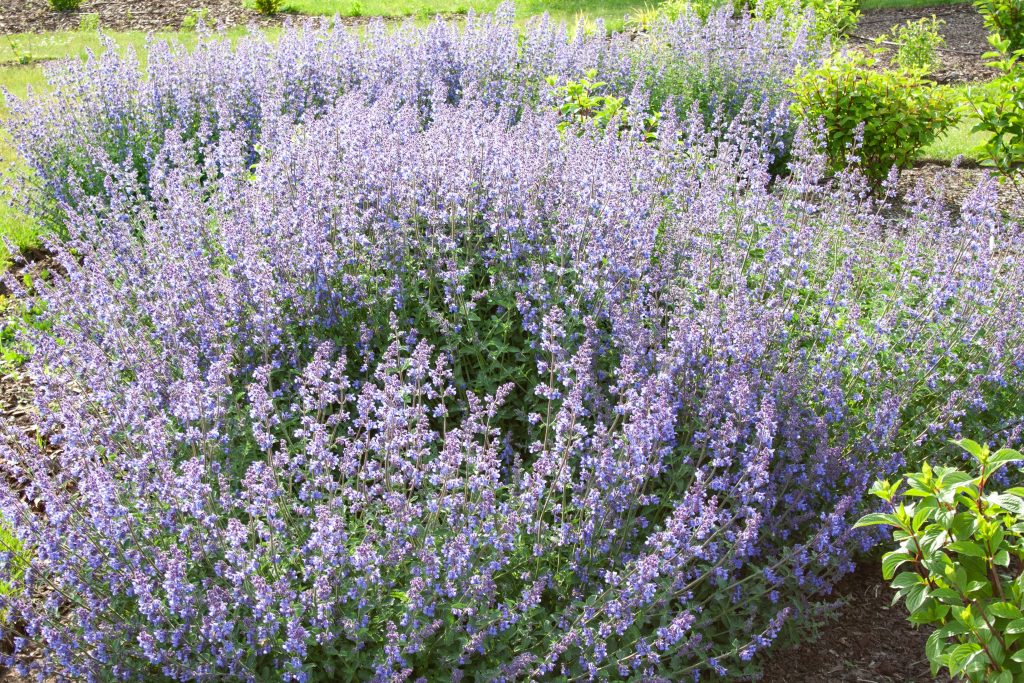
Care Needs: Prefers full sun and well-drained soil. Drought-tolerant.
Flowering Season: Late spring to early autumn.
Nepeta produces soft, lavender-blue flowers on long spikes, with aromatic grey-green foliage that attracts bees and other pollinators. It’s a reliable, low-maintenance perennial that provides a long season of colour and works well in borders or as edging.
Looking After Your Perennial Garden Plants
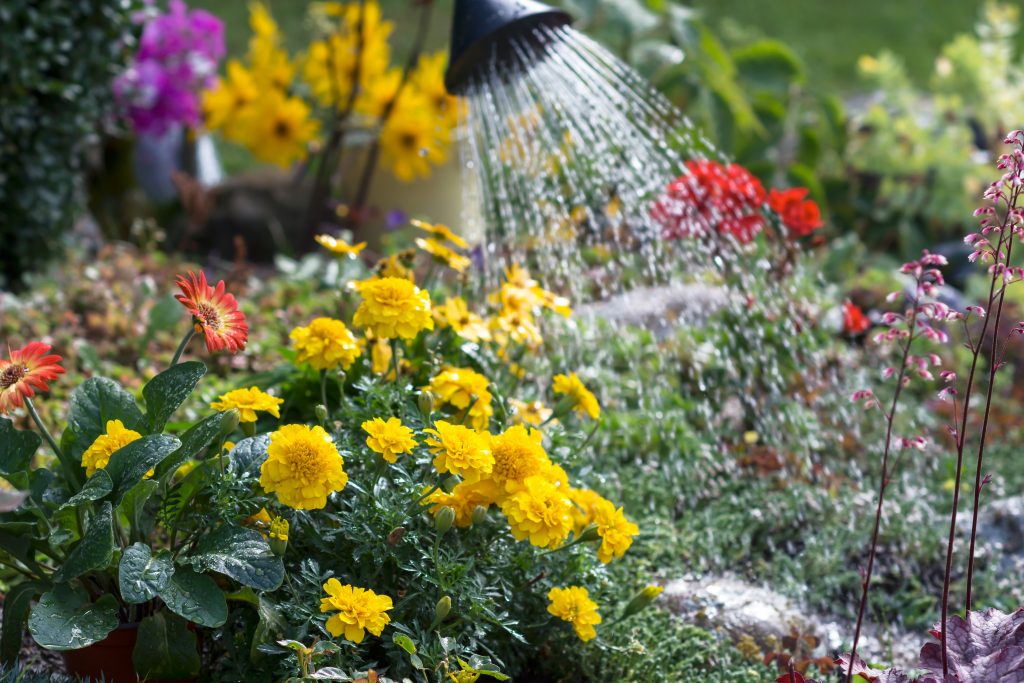
Caring for a low-maintenance perennial garden is simple if you follow a few essential care routines:
- Watering: Once established, most perennials need only occasional watering. Water deeply but infrequently to encourage deep root growth, which helps plants withstand dry periods. Early morning is the best time to water, reducing evaporation and giving plants time to absorb moisture before the day heats up.
- Feeding: Perennials generally require less feeding than annuals. A yearly application of a balanced, slow-release fertiliser in early spring will usually suffice. For particularly nutrient-poor soils, you can add compost or organic matter to enrich the soil and improve its structure.
- Pruning: Pruning is essential to maintain the shape and health of your perennials. Deadhead spent flowers to encourage further blooming and prevent unwanted self-seeding. Cut back plants after flowering or in late autumn to prepare them for winter.
- Managing Pests and Diseases: Low-maintenance gardens benefit from plants that are naturally pest and disease-resistant. Regularly inspect your garden for signs of trouble, such as discoloured leaves or holes. If problems arise, opt for organic solutions like neem oil or insecticidal soap.
- Reducing Maintenance: Mulching is one of the best ways to reduce garden upkeep. Apply a layer of organic mulch, like bark or compost, around plants to retain moisture, suppress weeds, and regulate soil temperature. Ground covers, such as Ajuga or Vinca minor, can also help by filling in gaps and reducing the need for weeding.
Enjoying Your Perennial Garden All Year Round
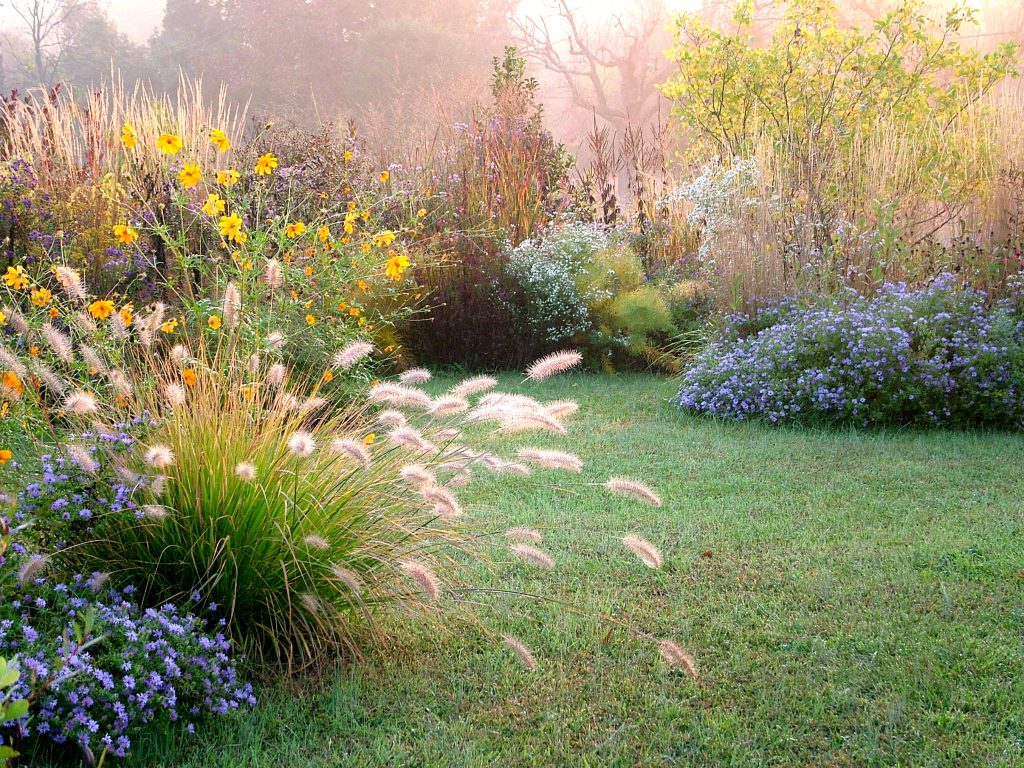
A well-planned perennial garden offers the best of both worlds – stunning, year-round beauty with minimal upkeep. By selecting the right plants for your soil, and grouping them according to their care needs, you create a garden that practically looks after itself.
Whether you’re looking to add a striking centrepiece or need advice on the best plants for your space, feel free to explore our range of high-quality planters and garden features, or reach out to our experts.
Get a Quote
Looking for advice or have a question? Fill out our quick form below and we'll put you in touch with the right person in our team! We'll get back to you by the end of the next working day.


